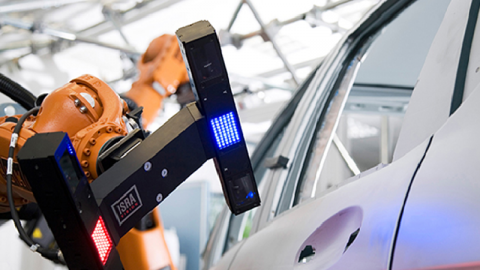
Accurate measurement across a range of micro meters is one of the basic requirements of the automotive industry. To accomplish this, many businesses have turned to image scanning technology using optical sensors.
Photoelectric sensor is a device composed of photovoltaic components. When there is proper light shining on the surface of the optical sensor, they change their properties. Optical signals are converted into electrical signals by the phenomenon of electron emission at the cathode (Cathode) when there is a amount of light shining on. From there the sensor will output to impact the technology. In the automotive industry, optical sensors have many different roles such as:
For example, with a number of convertibles, the metal arches for these vehicles are often very thin to ensure flexibility in the opening and closing process. However, the roof still needs to meet the standards of weather resistance, airtightness and air conditioning. To achieve this, designers often use optical sensor technology to determine the standard thinness, sunken and elasticity of metal pieces after machining. Thanks to that, the functions of the roof can be guaranteed.
In addition, the integration of robot operation with optical sensor devices is also an effective method to help manufacturers free human resources for the processing process, while minimizing the creation of products. defective products. Robot system – Photosensitive sensor operates as an independent worker, capable of identifying objects through sensor “eyes” and manipulating, processing by robotic arms. Data from sensors will be constantly updated in real time. Thereby, the system will self-assess whether the object meets the criteria or not.
Wenglor Sensoric’s 3D scanning technology
Recently, the manufacturer of optical sensor devices, Wenglor Sensoric, worked with ISW to provide a complete solution for automotive roof design, including automatic robots, 3-dimensional sensors, and software. management and control system. Through this solution, ISW has detected non-tight positions between vehicle door joints, thereby significantly reducing customer complaints.
This device is capable of scanning object images and rebuilding their models in 3D. All data is digitized for archiving at the time of scanning, so that the operator can continuously check the status of the object in real time.
The Wenglor ShapeDriveMLML sensor is known as a high-precision measuring device with small measurements. The in-line versions of ShapeDriveMLAS provide flexible choices of camera resolution (5-12 megapixels) to suit the needs of each manufacturer. With a data transfer rate of up to 7 Gbit/s, incidents or faults will be promptly reported to minimize damage to the manufacturer. Overall, optical sensor technology is opening up more and more potential for productivity improvement for car manufacturers in particular and industrial production in general.
Productivity and Quality Office